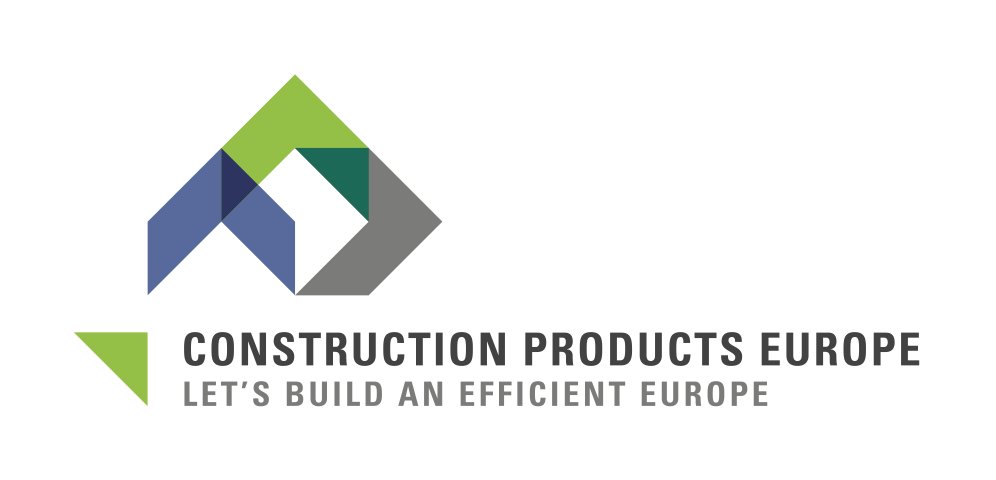
Published 12 July 2022
To successfully deliver the green and digital transition, the construction industry requires a clear set of transparent rules, supported by a stable legal framework.
We acknowledge the release of the long-awaited European Commission (EC) proposal for a new Construction Products Regulation (CPR). Amongst others aims, it should resolve the implementation issues impacting our industry and that we have regularly brought to the attention of the EC. We once again offer our comments on this essential piece of construction legislation that, if written correctly, should help us meet the EU Green Deal goals.
We welcome the following principles put forward in the EC proposal:
• Underpinning the Single market for construction products
• Including of circularity principles and environmental sustainability objectives
• Setting standardisation at the core
• Reinforcing the CE marking of construction products
• Facilitating information exchange along the value chain with digitalisation
• Clarifying EADs/ETAs development procedures
• Strengthening the role of market surveillance authorities
Alongside these positive aspects of the EC legal proposal, there are however numerous issues of concerns that we wish to bring to your attention:
1. Scope of the Regulation
The CPR lays down the common technical language for construction products to be placed on the market. We understand that in the current proposal, some products have been excluded, while others and some technologies that are not covered in the current CPR are now in the scope of the EC proposal.
We recommend excluding 3D printing and any other technologies from the scope as these do not qualify as construction products, which are defined by properties and performances irrespective of how these are produced. Furthermore, considering the difficulties to define which products may be excluded or included from the scope by means of a definition, a case-by-case approach should be developed.
2. Aspects related to digitalisation
We fully support the opportunity to use digital tools to deliver information. As evidence of our commitment, we delivered Smart CE marking as a CEN Workshop Agreement and, with the backing of the EVC, we have called for its support and legal implementation.
We appreciate that the proposal offers the option to use permalinks for Declarations of Performance and Declarations of Conformity in pdf format but would strongly recommend the use of machine-readable digital data formats as these would make greatly contribute to the digital transition for all players in the construction value chain.
We encourage a more ambitious approach to digitalisation, enabling construction manufacturers to use a harmonised, machine-readable format in accordance with Articles 9 and 10 of the Eco-design for Sustainable Products Regulation proposal. The Declaration of Performance and Declaration of Conformity would then immediately deliver the content of the announced Digital Product Passport for construction products.
3. Principles of good governance
The construction sector, characterised by long-term investments, requires a stable legal framework to remain competitive.
The current draft offers multiple possibilities for the EC to adopt Delegated Acts, and this would go against our request for a stable legal framework. The resulting legal uncertainties and further complexities will add confusion to a proposal that is already seen as extremely complex and allowing for diverging interpretations.
In the proposal, the Delegated Acts adoption criteria are unclear and lack transparency. We must therefore consider this as a free ticket for the EC to decide whether essential characteristics should become compulsory or voluntary for some family of products, to include threshold levels and classes of performance, to add further environmental obligations, or to introduce labelling requirements including a ‘traffic-light-labelling’.
We strongly recommend reducing the number of articles that may be amended by Delegated Acts. This could be done by further specifying the requirements and that the delegation of powers to the EC should only be used under exceptional circumstances to solve issues that were not addressed in the CPR.
4. Standardisation
Whereas the CPR proposal foresees a solution in case the standardisation system should not deliver in a timely manner, or the requested output, inter alia it empowers the EC to adopt other technical specifications by means of Delegated Acts. We ask that this option should only be allowed under exceptional circumstances, thereby avoiding undermining the European standardisation system. In such cases, Member States experts and stakeholders should be invited to offer input in the assessment and adoption process of standardisation deliverables.
Given the importance of standards for the Single Market and the transition towards a green, digital, and resilient economy, it is paramount that the CPR further details the European standardisation processes and timelines. The CPR should also define the roles and responsibilities of both Member States and the EC. We would recommend further clarification of the rules behind issuing a standardisation request for mandatory or voluntary harmonised standards by the EC. Lastly, as standards are particularly valuable to SMEs for demonstrating compliance, standardisation requests for voluntary harmonised standards should become an obligation rather than an option.
We draw your attention to the fact that there are still too many harmonised standards for which citation in the Official Journal is blocked and the situation will regretfully remain unchanged until the new CPR will enter into force. Our industry needs a stable, official, and binding EC guidance for standard writers. This long-requested paper is the missing element that would allow the delivery of standardisation deliverables in a timely manner.
5. Obligations for manufacturers
One of the novelties of the proposal as regards obligations is the request to issue a Declaration of Conformity in addition to the already existing Declaration of Performance. Although manufacturers are obliged to issue a ‘Declaration of Conformity and a Declaration of Performance’ in one single document, there is great concern regarding the administrative burden and additional costs, especially in absence of voluntary harmonised standards that provide presumption of conformity.
Another proposed obligation would force manufacturers to upload information in an EU construction database or system. The establishment of such an information tool raises questions in terms of ownership, maintenance, administrative, and financial burden. The added value of such a central database remains to be demonstrated when compared with the storing data in building logbooks. Further considerations include the quantity of information as well as the possible access to this information belonging to manufacturers by authorities and other stakeholders, including from third countries. It is therefore requested that the coherence of these obligations be check with existing EU data legislation.
Other obligations which are currently not in place in the current Regulation, and which would require further consideration in terms of extra burden or technical feasibility include the obligation to label products as to their intended use (professional or non-professional)
It is foreseen that these potential new obligations will complexify business, increasing administrative and financial burden with no added value for downstream stakeholders. We therefore recommend that some of these obligations, which seem sensible for end use products, be reconsidered.
6. Focus on environmental obligations and sustainability principles
For many years already, our industry has been voluntarily delivering Environmental Product Declarations (EPDs) based on EN 15804. We therefore welcome the integration of Life Cycle Assessment (LCA) of construction products in the proposal. For sake of transparency and clarity, we request that EN 15804:2012 +A2:2019 is clearly mentioned in the proposal as the official methodology to be used for the assessment of these obligations, thereby avoiding any misinterpretation. Furthermore, the Regulation should list those life cycle assessment indicators that would be required, when and whether these will become mandatory or voluntary over the time. Clarification should also be given concerning the ‘software’ that will be required, and on the development of scenarios and interplay of this software with the building assessment tool Level(s).
Circularity principles (durability, reparability, recyclability) are at the heart of the whole process of the green transition and are much welcomed, but the Regulation should clearly indicate how these should be implemented. One size fits all approach is not applicable given the wide variety of construction sectors and the way circularity principles are applied to them. We therefore call for the applicability of these principles to be assessed for each category or family products in co-operation with industry. In this respect, environmental products requirements and traffic-light systems are very critical as environmental performance can only be properly assessed at building level.
7. Implementation of the Legal framework
The current draft foresees the repealing of the current CPR on 1st January 2045. This scenario would lead to a 20-year ‘transition’ period during which the new CPR would be implemented stepwise, leading to an unlevel playing field between those products still under the old CPR and those already under the new Regulation! This would oblige Member States and stakeholders to work and meet the requirements of two parallel systems during this long transition period, not only with regards to the single market for construction products, but also with regards to the applicable national building requirements. This will certainly weaken the internal market, confuse, and burden all construction value chain stakeholders. We obviously regret this proposed lengthy implementation process and recommend that the transition is clear, avoiding distortions and ensuring that all necessary tools (e.g., voluntary harmonised standards) are made available right from the start.
8. Harmonised zone
Whereas the intention described in the proposal goes in favour of strengthening the internal market by setting rules beyond which Member States cannot regulate, European Assessment Documents are no longer considered as Harmonised Technical Specification. These are excluded de facto from the Harmonised Zone, which is seen as being contrary to strengthening the single market, enabling in this case Member States to continue imposing further regulatory needs for those products covered by EDAs. The proposed exclusion of EADs from the Harmonised Zone needs to be reviewed in the framework of the whole EAD system and in the context of applicable obligations and exemptions.
We recommend for EADs to be integrated in the so-called Harmonised zone and to be considered as an equal route for placing construction products on the market. This integration will enable construction products covered by Harmonised Standards and European Assessment Documents be considered on an equal basis and guarantee a level playing field for all construction manufacturers, whether their products are covered by Harmonised Standards or EADs.
9. Complaint portal
We are of the opinion that this kind of portal where anyone (citizen or company alike) can report about non-compliance of products without any conditions or consequences would create problems and facilitate potential misuse. Besides, users can already file a complaint with their national authorities.
10. Inherent Safety products requirements
The list of risks is considered too long, and it would be difficult to implement for each product group. Allowing the EC to further amend this list would bring further confusion. We request full transparency on the application of such inherent safety requirements only when a Delegated Act is issued, and for the list of risks to be reduced. In this respect, we also ask for a clarification of the role of the CPR in demonstrating compliance with the General Products Safety Regulation.
11. Product Information Requirements (Annex I part D)
The information manufacturers would have to deliver would be extensive and may not always bring added value but may increase the administrative and financial burden. Again, the proposal foresees the opportunity for the EC to amend this list trough Delegated Acts leading to further uncertainties and confusion. We ask that the list of product Information is reconsidered considering the needs of all stakeholders but without overburdening industry.
12. Assessment and Verification Systems (Annex V)
The obligations described in Annex V, in relation with the Assessment and Verification System, are worrying. Indeed, the motivation for the proposed shift of responsibilities from the notified bodies to the manufacturers in AVS 3 compared to the current AVCP system 3 is unclear and may increase the risk of non-compliant products manufactured outside the EU that may be placed on the market. The number of random checks to be performed by notified bodies seem unrealistic, especially for SMEs and in general where several AVS apply to a product, or where several Notified Bodies are involved. The verification system of allocating points ahead of issuing a certificate is bordering with a school system that may not be implementable. Lastly, whereas industry welcomes the focus on environmental requirements, the proposed control of the environmental sustainability requirements by notified bodies does not offer any tolerance for incorrectness, which seem inappropriate given the known uncertainties of the assessment models and should therefore be re-examined. We recommend that the Assessment and Verification System described in Annex V be reconsidered, allowing for a system that is workable for all players.
We welcome the legislative proposal, especially the opportunity it offers to strengthen the internal market. However, the draft legislation is seen as potentially burdensome and it would not offer the user-friendly system required by the construction industry to place their products on the market and, thereby, actively contribute to the goals set in the EU Green Deal.
Our industry offers solutions but requires a stable legal framework to remain competitive and win the race of digital and green transition. Much to our regret, the current proposal does not completely fulfil these needs.
We will continue to engage in a constructive dialogue with the co-legislators, aiming to deliver a system that considers the needs of all the construction value-chain stakeholders, and enables our industry and the society to reap the benefits of a sustainable built environment.

